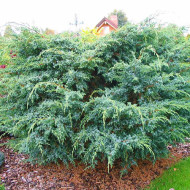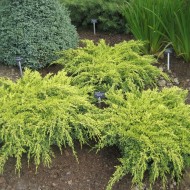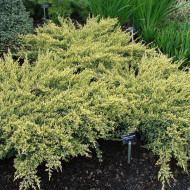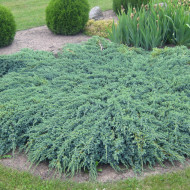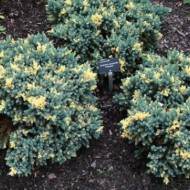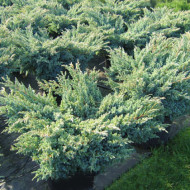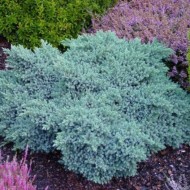Conditions for planting and growing ornamental scaly juniper
Content
Description of scaly juniper
The long-lived evergreen shrub Juniperus squamata came to us from the Himalayan mountains and East Asia. According to the botanical description, this is a low, spreading plant that grows up to 1 m with a diameter of 1.5-2 m. The root system is highly branched, horizontal. The shoots are drooping, creeping, with an annual growth of almost 15 cm. An exception is the Loderi variety, which has a cone-shaped crown.
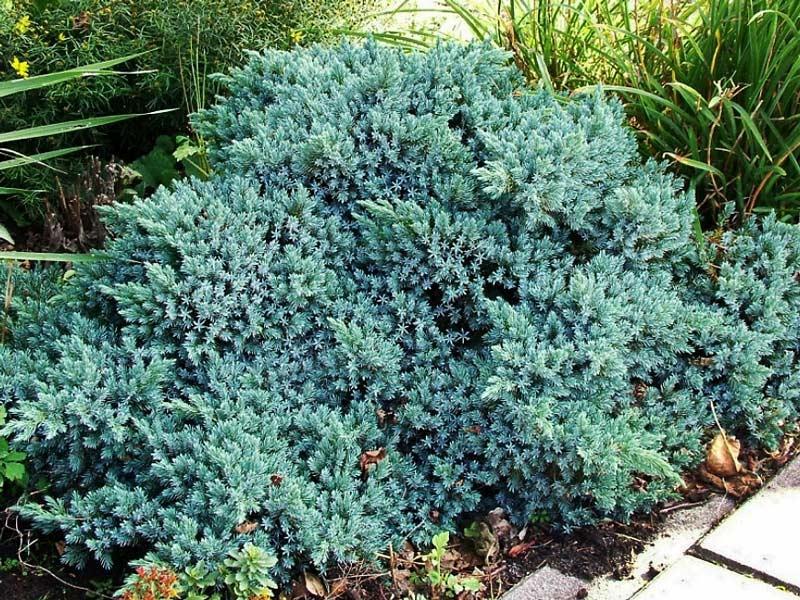
The needles are green-blue with a bluish tint, and on young branches - dark green. Throughout the year, the color does not change, remaining the same bright. Fruits-cones are spherical, blue-gray. The culture is frost-resistant, tolerates temperatures down to -35 ° C well, and is also not afraid of strong winds and direct sunlight.
Popular varieties in horticulture
Today, botanists know more than a dozen varieties of scaly juniper. All of them feel comfortable in central Russia, decorating parks and household plots. Read on for the most popular varieties.
Blue Carpet
Low-growing shrub no more than 0.6 m in height with hanging branches. Differs in fast growth rates. The needles are small, very tough, prickly. The color is silvery blue. The plant does not require shelter for the winter, light-loving, does not tolerate waterlogged soils. Looks good along curbs or near artificial reservoirs.
Meyeri
A low juniper with a decorative crown was bred by Chinese breeders at the beginning of the twentieth century. It grows from 0.3 to 1 meter, forming beautiful creeping bushes with drooping shoots. The color is green-blue with a silvery tint. A culture of medium frost resistance, does not like dense soils.
Holger
An evergreen shrub no more than one meter high and about 1.5 m wide. Juniperus squamata Holger is characterized by an interesting color - gray-green needle-like needles at the tips are yellowish. Holger is frost-resistant, loves an abundance of sunlight. It can be grown in a group planting or as a tapeworm.
Dream Joy
Decorative low-growing bushes with a height of only 0.7-0.8 m and a diameter of up to one and a half meters. They are distinguished by green-blue branches with lemon-yellow tips. Juniper grows comfortably in nutritious, well-drained soil. Since Dream Joy is small in size, it is better to plant it in the foreground.
- Meyeri
- Holger
- Dream joy
- Blue carpet
Blue Star
Slow growing variety, not exceeding one meter, was bred by Dutch breeders in the second half of the twentieth century. Densely hanging shoots form a dense spherical crown. The color is bluish with a silvery-bluish bloom.The plant is winter-hardy, loves light and is not demanding on the soil.
Blue Swede
A short shrub no more than half a meter in size and almost 2.5 m wide. The needles are tough, prickly, green-blue, up to 1 cm long. A characteristic feature of Blue Swede is that in winter the usual color takes on a steel-gray shade. A culture of medium frost resistance, it feels good even on depleted soils.
Hunnetorp
This species is actively cultivated by Scandinavian and European gardeners. Juniperus squamata Hunnetorp develops slowly and often grows no more than one meter. The crown is dense, compact, green in color with a silvery-bluish bloom. Hannethorp is able to withstand severe frosts and can grow even in partial shade.
Some botanists are of the opinion that this variety is a variation of the Blue Sweed variety.
Floreant
Juniperus squamata Floreant was bred from Blue Star. A low-growing juniper up to one meter high and 1.5-2 m in diameter. It is characterized by a variegated color - light yellow spots are randomly scattered along the green-gray needles. The variety grows on any soil and does not require additional shelter for the winter.
- Hunnetorp
- Floreant
- Blue swede
- Blue star
Video "Planting and caring for a juniper"
In this video, experts have considered the rules for planting and growing ornamental crops.
The subtleties of agrotechnology of scaly juniper
Juniperus squamata is an easy-to-grow coniferous crop. In order for the plant to develop correctly, you should adhere to the basic rules of planting and care. We will tell you more about agricultural technology further.
Seedling and planting plot preparation
Gardeners recommend choosing three-year-old seedlings. The root system can be closed or open. In the latter case, it is treated with a manganese solution and soaked in Kornevin before being planted on the site.
Landing pits are prepared in advance. The holes are made deep, measuring 70x15 cm, with an interval of about two meters from each other. At the bottom, 20 cm of a drainage layer is poured, consisting of small pebbles or broken bricks.
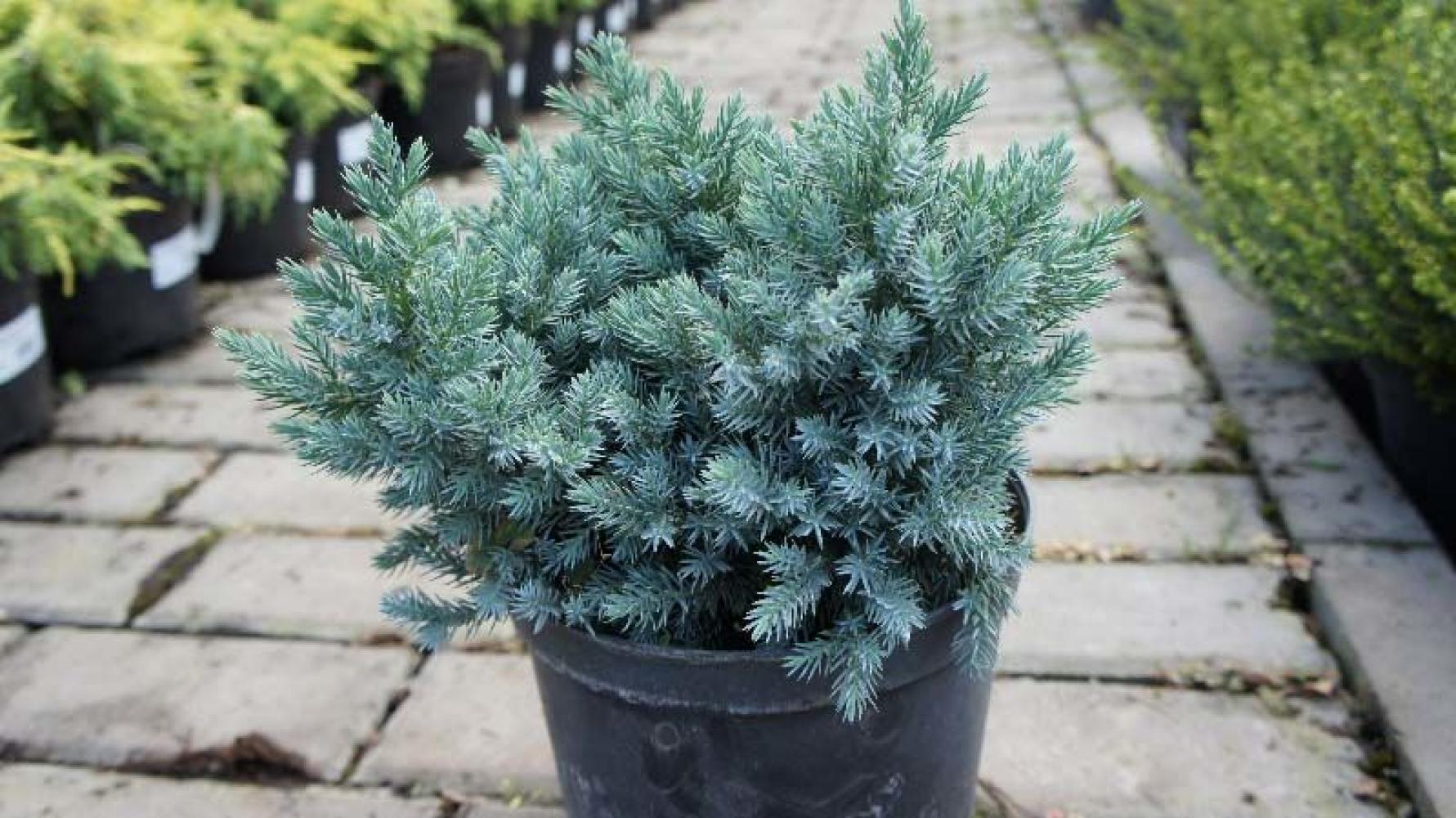
Landing rules
In order for the plant to accept well and quickly adapt, the following algorithm must be observed when planting:
- the planting pit is partially filled with a soil mixture of peat, sand and humus, forming a small mound;
- the seedling is placed horizontally, neatly leveling the roots;
- fall asleep with the rest of the substrate, leaving 10 cm free on top;
- lay out a mulch layer of sawdust;
- a bucket of water is poured into the trunk circle.
Watering and feeding
It is necessary to water the scaly juniper regularly, but in moderation - moisture stagnation should not be allowed. During the season, it is enough to moisten the shrub at the root 3-4 times. In very dry weather, you can irrigate the plant over the green part, doing this early in the morning or after sunset. Fertilize the culture only before three years of age. All three springs bring in mineral complexes with nitrogen content at the root.
Trimming and shaping
The formation of the crown begins when the shrub reaches a height of 0.3 m. Since the annual growth of a juniper is only 10-15 cm, the procedure is carried out once a season. This is done in early spring, before the active movement of juices begins. At the same time, sanitary pruning is carried out, removing dried branches and frozen needles.

Preparing for winter
Although the coniferous culture is frost-resistant, it still requires proper preparation for the dormant period. In late autumn, the trunk circle is mulched with an additional layer of sawdust, and covered with dry grass on top. The branches are fixed with a tourniquet so that they do not break under the weight of the snow cap, and they are tied to the trunk.
Diseases and pests of culture
Juniper scaly has a high immunity to various diseases. If you follow all the rules of growing, then the risk of infection with fungal infections is very small. However, with poor care, coniferous crops can be exposed to:
- dry spotting;
- wilt;
- verticillosis;
- brown snow mold;
- rusty needles.
At the first sign of infection, the damaged branches are cut off and burned. Places of cuts are lubricated with one percent copper sulfate, and then sealed with garden varnish. The bush itself is treated with a fungicide such as "Maxim" or "Fitosporin".
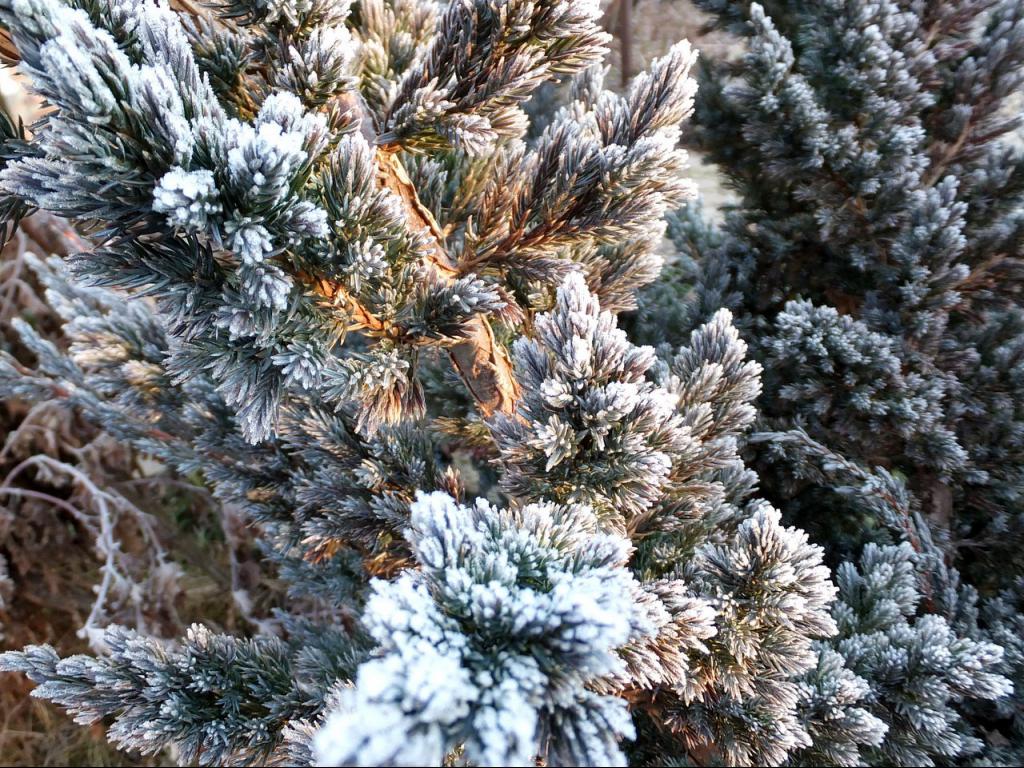
Sometimes insects can appear on the plant. Most often these are spider mites, scale insects, moths or aphids. They get rid of pests with the help of insecticides (for example, Actellik).
Juniper scaly in landscape design
The main advantage of Juniperus squamata is its harmonious combination with almost all ornamental plants. The best neighbors for him are recognized:
- barberry;
- heather;
- decorative cereals;
- succulents;
- phlox;
- lilies;
- peonies;
- roses.
It is strongly not recommended to plant shrubs near apple trees, as the risk of rust infection of needles increases.
When decorating a garden, juniper will well complement the rough Scandinavian style, which is characterized by spacious rocky areas, angular lines and northern restraint. Also, the culture will look good in the English style, where it will complement the composition, ennobling the overall landscape. Often, the plant becomes part of the oriental design with its laconic, contrasting forms.
Creeping bushes will look spectacular as a design for paths or artificial reservoirs. They are often used for border plantings, rock gardens, rockeries and hedges. Juniper also looks beautiful as a tapeworm.
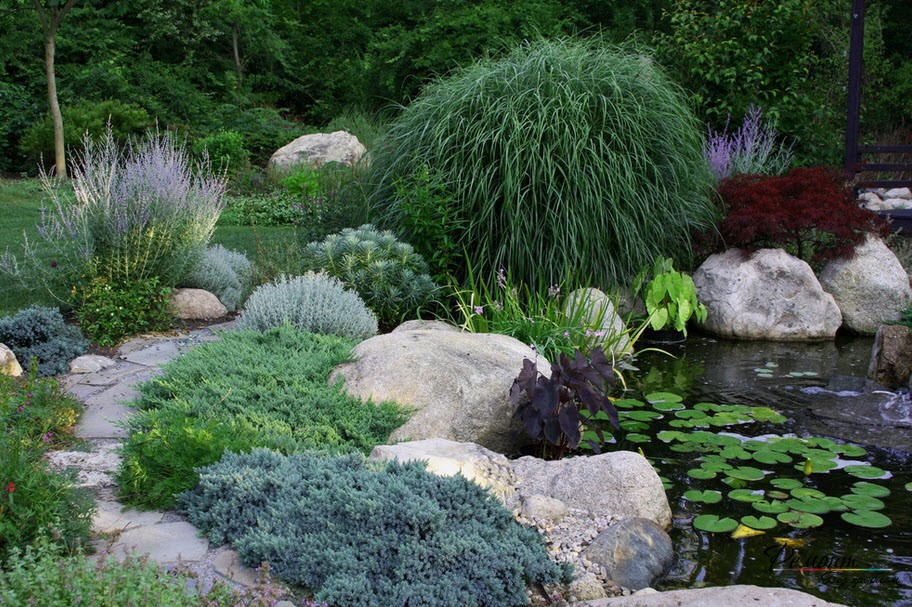
Gardeners reviews
“I have been growing four juniper bushes for a long time. I planted them to improve the artificial pond in the country. Completely unpretentious plants that remain beautiful even in winter. Plus, due to the fact that they grow near water, they do not need frequent watering. "
“Last spring I planted some junipers around the summer pavilion. I bought three-year-old seedlings, and during this time they turned into already good bushes. Now I am slowly shaping the crown to give them a more decorative look. "
“We got the coniferous bush from the previous owners of the dacha. First encountered this culture and at first did not even know what to do with it. However, it turned out that the plant does not need special care. Now the juniper serves as the main decoration of the rock garden. "
The decorative Juniperus squamata is not for nothing that our gardeners are so fond of. It is not capricious, frost-resistant, does not require additional maintenance and is a spectacular decoration of the garden.

